With the in-depth development of China's digital economy and the acceleration of the industry's digital transformation process, it is the general trend for enterprises to migrate to the cloud.
IDC's "IDC FutureScape: Global Cloud Computing 2023 Forecast - China Enlightenment" report shows that after years of rapid growth, cloud computing has become a vital part of China's IT market. IDC predicts that the compound growth rate of this market will be around 20% in the next five years. In the case of small macroeconomic growth as the norm, the growth rate is still quite impressive. The cloud is shaping the new IT industry, becoming the main driving force for the innovation and optimization of basic software and hardware, and an important new engine for the evolution of technical architectures such as networks, security, and applications.
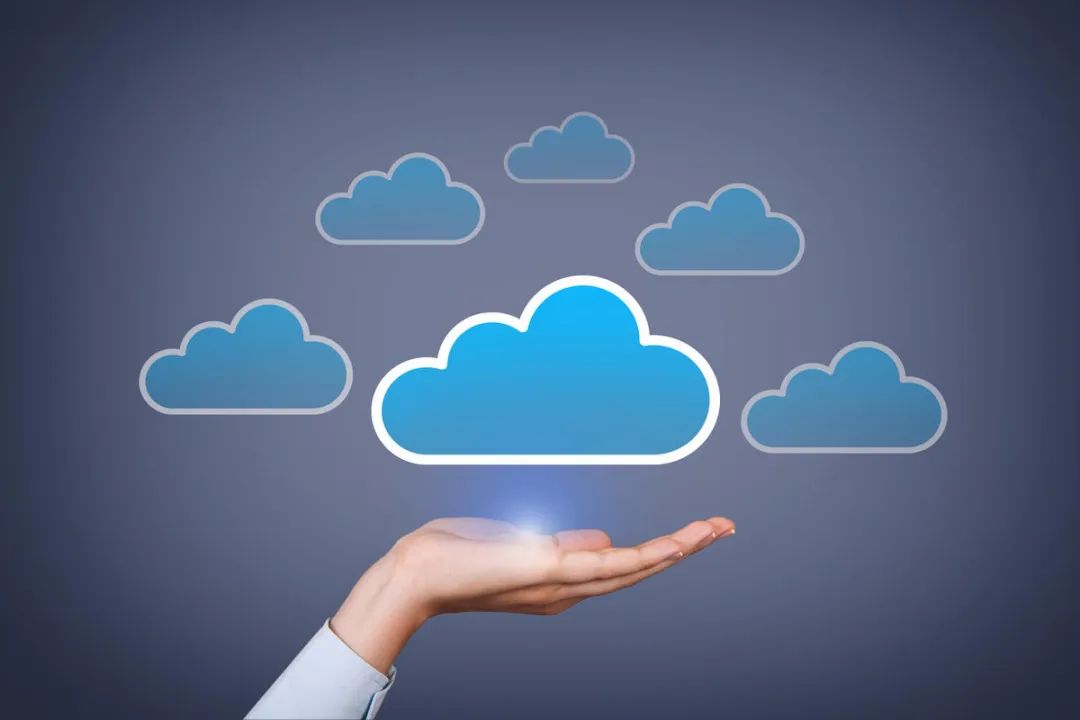
More importantly, in the past few years, under the promotion of policies such as enterprises going to the cloud, the current domestic cloud computing applications have expanded from the Internet to traditional industries such as government affairs, finance, industry, medical care, and transportation. Therefore, more and more enterprises have raised their cloud strategy to a new level, and are gradually accelerating their evolution towards cloud architecture or multi-cloud architecture.
However, we must also see that with the deepening of enterprise cloud migration, many enterprises generally encounter the problems of business migration to the cloud, difficulty in business compliance on and off the cloud, and difficulty in ensuring enterprise consistency in the process of deploying cloud computing. The migration process of many applications is not simple, the cycle is long, the cost is high, and it also affects the stability of the business. From this perspective, how to effectively plan the long-term cloud computing construction route of the enterprise? How to quickly and easily implement enterprise cloud access and cloud management? Today, when enterprises go to the cloud and become the general trend, it becomes even more crucial and "imminent".
Cloud Consulting First
The wave of cloud computing began in 2006. In the past ten years, from the acceptance of the concept of cloud computing, to the technological torrent of the Internet formed by the public cloud, to today's enterprises going to the cloud. Along the way, although going to the cloud is no longer a problem, there are more roads ahead for many companies.
Especially as enterprises enter the "second half" of cloud migration, including the emergence of public cloud, private cloud, hybrid cloud, dedicated cloud, industry cloud and other cloud migration methods, based on the variables and diversity of the cloud itself, it can be said that many Businesses are a little confused. In this context, how to realize cloud migration economically, quickly, effectively, and reasonably has become the most important consideration in the process of cloud migration for enterprises.
According to Zhan Wenzhuo, a senior cloud solution consultant of Dell Technologies Group, the main challenges facing enterprises to go to the cloud are mainly concentrated in four aspects:
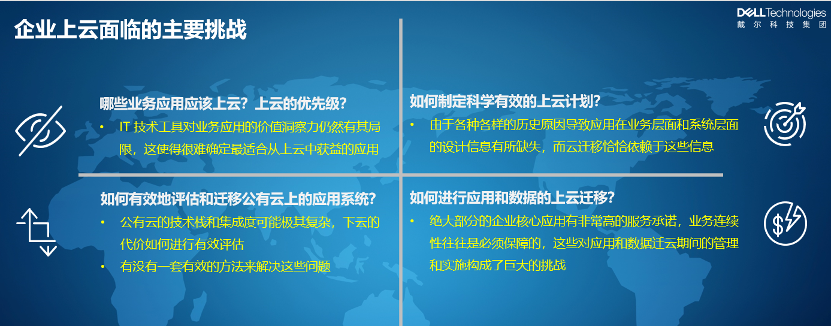
One is, which business applications of enterprises should go to the cloud? How to determine the "priority" of going to the cloud? With the acceleration of digital transformation, the technical complexity involved has increased exponentially in the past few years. From the perspective of enterprises, although enterprises can adopt more new technologies and new tools, many The value insight of technical tools to business applications still has its "limitations", so this makes it difficult for enterprises to determine what technology or application should be selected to realize the value advantages brought by the enterprise's migration to the cloud.
The second is, how to top up the cloud plan with the priority of science? As we all know, due to various historical reasons, the design information of many enterprise applications at the business level and system level is often "missing", and the cloud migration of enterprises depends on these key information. The cloud plan and the steps to go to the cloud are even more important.
Third, how to migrate applications and data to the cloud? The core applications of most enterprises have very high service commitments. It can be said that business continuity and stability must be guaranteed, and this poses new challenges to the management and implementation of enterprise applications and data during migration .
Fourth, how to effectively evaluate and migrate application systems on public clouds? With the changing needs of enterprises on the cloud, many enterprises are also considering migrating from the cloud to the off-cloud. However, the technology stack and integration of the public cloud are extremely complex. For enterprises, it is necessary to consider the cost of going to the cloud. effective evaluation? Is there a set of effective methods to solve these problems.
For example, Zhan Wenzhuo said that a large enterprise previously hosted all its business on a public cloud platform, including the development and testing environment, production environment, and disaster recovery environment. Later, we also faced unprecedented challenges, such as the lack of overall planning and construction in the early stage, which led to the excessive use of public cloud resources; the rapid increase in the cost of cloud resource usage, and the cost of usage has greatly exceeded the expectations of enterprises; in addition, with GDPR, personal privacy protection, The promulgation of a series of laws and regulations such as the Cyber Security Law has put forward higher requirements for the information security of this large enterprise; The technology binding of cloud vendors has greatly increased the cost of enterprises going to the cloud or migrating to the cloud, and there are problems such as high cost and long time period for enterprises to go to the cloud.
In this regard, Zhan Wenzhuo suggested that enterprises must make a preliminary cloud consulting plan before going to the cloud. This cloud plan is very necessary and particularly critical. The key behind this is that the essence of enterprise cloud migration is the migration of applications and data. Business needs are the main internal factors of cloud migration. Therefore, enterprises must go through the early cloud consulting planning to "find out" the core of enterprise cloud migration. Requirements, including whether the business scenario is met, whether the technical scenario is met, whether the overall cloud migration is satisfied, and whether the partial cloud migration is satisfied. Only by knowing what is in mind can we formulate a cloud migration plan more leisurely, and finally realize the "smooth cloud migration" of the enterprise. Maximize business continuity.
"One Step to the Cloud" Combination Boxing
It is precisely because of the insight into the changes in customer needs that Dell Technologies has provided enterprises with a set of brand-new solutions for "going to the cloud in one step", the core of which is "cloud consulting" first, "strong platform" foundation, "cloud consumption" innovation In three aspects, it helps customers in various industries to easily and simply go to the cloud, so as to quickly realize the value of business innovation.
First of all, from the perspective of "cloud consulting", Dell cloud consulting services provide a mature "methodology" for enterprises to go to the cloud, from "status, problems, vision, goals, blueprints, benefits" and "people, process, technology" It helps enterprises to build early-stage plans for cloud migration in multiple dimensions, and its benefits are reflected in: it can help enterprises evaluate the current state and expected future state; reach a consensus on the cloud among various departments to narrow the gap; help enterprises formulate feasible plans Next steps, and maximize the expected results; it can also help enterprises shorten the time to go to the cloud and migrate to the cloud. Data show that through Dell cloud consulting services, the time for enterprises to go to the cloud can be shortened from the past few months to 3 to 6 weeks.
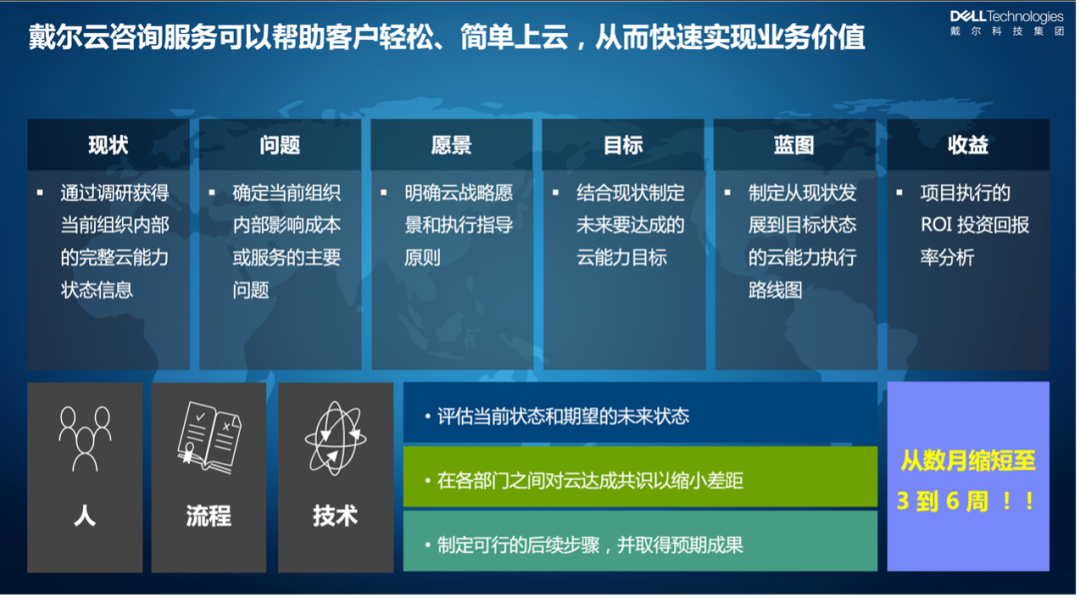
Secondly, from the perspective of "strong platform" foundation, Dell Technologies has also joined forces with VMware to create a Dell Technologies cloud platform based on the hyper-converged all-in-one machine VxRail. Through the "consistent" architecture and "integrated" software Hardware services can also pave the way for an enterprise's digital transformation journey, and help enterprises fully control the multi-cloud architecture. With the advantages and value of stability, reliability, and economic flexibility, enterprises can truly achieve "double the result with half the effort" when going to the cloud.
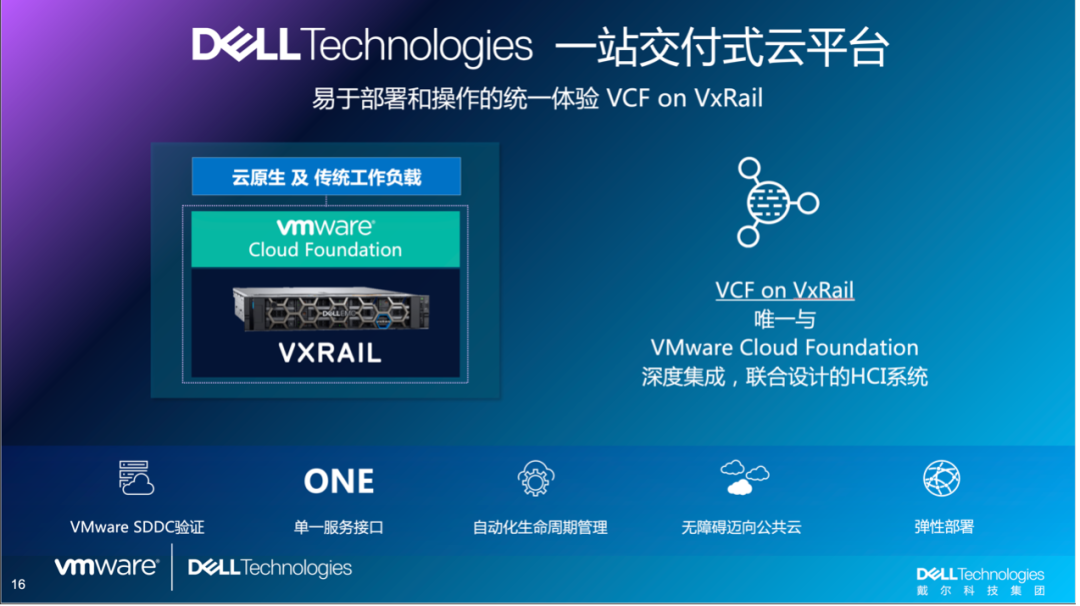
Finally, from the perspective of "cloud model" innovation, Dell Technologies has innovatively launched a new model of FOD (full name: Dell APEX Flex on Demand) in 2021, allowing enterprises to enjoy the same flexibility as public clouds. The local data center or private cloud can be used permanently, thus better assisting enterprise cloud transformation. Dell's pay-as-you-go FOD has three major features: "true pay-as-you-go, free elastic scaling, and economical operating costs."
Specifically, when enterprise customers use Dell Technologies' enterprise-level infrastructure, they can consume according to time or capacity usage, so that customers' private clouds or private cloud data centers can have the flexibility and agility of public clouds. , thus greatly reducing operating costs and improving the ability of business innovation.
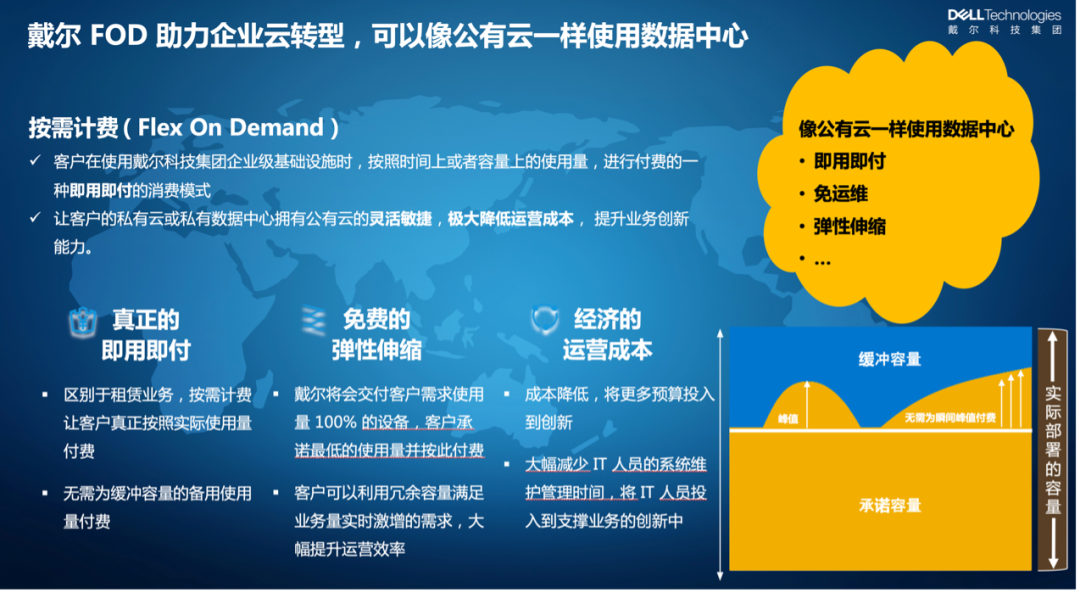
Objectively speaking, in the market, the "combined boxing" solution of "going to the cloud in one step" provided by Dell Technology Group has its own unique value, including "always maintaining neutrality and objectivity", that is, the technical consultation and technical solutions provided by Dell It is not limited to software and hardware products. At the same time, due to years of practice and precipitation in the industry, Dell can help customers choose the most suitable technical route, solutions and tools; at the same time, Dell "has end-to-end design delivery capabilities" and can provide The enterprise provides all-round, end-to-end digital transformation solutions; in addition, Dell has "abundant project implementation cases". Dell has peer cases and best practice experience, which can not only help customers quickly identify key points and formulate reasonable implementation plans, More importantly, it can ensure the smooth delivery of the project; especially critical is that Dell has "strong delivery and landing capabilities". Dell currently has rich experience in project delivery and a large number of consulting and implementation consultants, which can accelerate the pace of enterprises going to the cloud or migrating to the cloud , thus "accelerating" the digital transformation of enterprises.
"Strong platform" foundation
In fact, in the "one step cloud" provided by Dell Technologies, it is recommended to use a "strong platform" - Dell Technologies Cloud Platform VCF on VxRail (full name: VMware Cloud Foundation on Dell VxRail), which has a "consistent architecture, consistent Features such as "consistent operation and consistent service" can help enterprises better realize cloud migration and migration.

The so-called "consistent architecture" means that the Dell Technologies Cloud Platform can provide a consistent infrastructure across core, edge and cloud, and is a new platform to accelerate the realization of hybrid clouds for enterprises; integration, enabling automated end-to-end lifecycle management, while supporting scaling from small scale to tens of thousands of nodes, while deployment and operation are extremely simple in the process; "consistent service" refers to Dell Technologies Cloud The platform can provide unique integration with VxRail to accelerate service delivery and help enterprises gain modern value-added advantages. It is precisely because of this that the Dell Technologies cloud platform plays a key role in both enterprise hybrid cloud operations and business scenario applications.
According to Zhong Congjun, Cloud Computing Architect of Dell Technologies Group, during this process, Dell Technologies Group also helps customers improve their operating experience in an all-round way through continuous innovation, and better helps customers realize the full life cycle management of cloud platforms. Specifically:
On the one hand, the Dell Technologies Cloud platform has always maintained an upgrade iteration of "advancing with the times". The platform VCF on VxRail has maintained rapid upgrade iterations in the past few years, so it can meet the ever-changing needs of enterprise customers.
The Dell Technologies cloud platform is based on the latest VxRail8.0, supports the latest VMware vSphere 8 and vSAN 8 software, and can run efficiently on the DPU. It is also a cloud platform that fully supports the latest ESA technology vSAN architecture, and this This kind of technological innovation that "seamlessly connects" with VMware can help enterprises to better create high-performance, low-energy consumption, easy-to-deploy, and easy-to-manage hyper-converged systems and build a strong cloud platform architecture, and truly stimulate the momentum of enterprise innovation. Help enterprises accelerate into the new era of digital transformation.
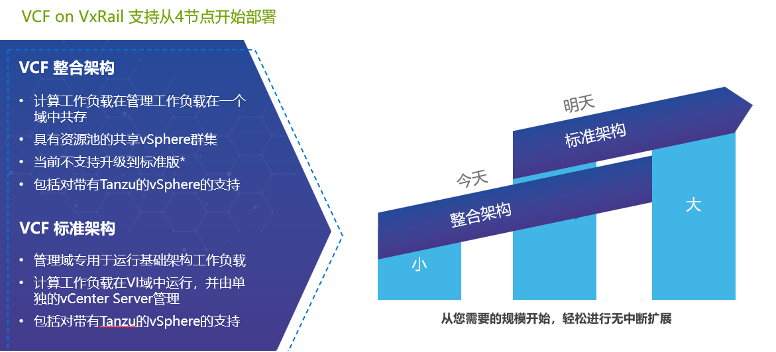
Not only that, in order to minimize the threshold for enterprises to go to the cloud, the Dell Technologies cloud platform provides deployment modes of integrated architecture and standard architecture, and supports deployment from 4 nodes. Enterprises only need to choose different architectures according to their own needs and scale. Subsequent extensions can also be easily extended without interruption.
On the other hand, the Dell Technologies Cloud Platform also creates a "full-stack" automated lifecycle management, which enables enterprises to better implement the easy deployment, configuration and lifecycle of the entire end-to-end software on the Dell Technologies Cloud Platform. and hardware infrastructure stack.

Among them, with the help of SDDC Manager, it is possible to orchestrate the deployment, configuration and lifecycle management of vCenter, NSX and vRealize Suite on the ESXi and vSAN layers of VxRail; in addition, it also supports the unification of multiple VxRail clusters into workload domains, or into multi-clusters Workload domain; in addition, the VxRail Manager in the Dell Technology platform has also achieved deep integration with the SDDC Manager, which can be used to deploy, configure ESXi, vSAN and hardware firmware and perform lifecycle management; while using the native VxRail Manager deployment process; Supports native VxRail LCM execution using an orchestrated SDDC Manager, as well as providing monitoring of the health of hardware components and providing remote service support.
Zhong Congjun said that through the "full-stack" automated lifecycle management of the Dell Technologies cloud platform, enterprises only need to "one-click" upgrades to perform non-disruptive upgrades on fully integrated hardware and software stacks; Mix heterogeneous node types and multiple generations to meet the requirements of any enterprise workload and more.
The full text concludes that with the acceleration of the digital transformation of enterprises, it is the general trend for enterprises in various industries to migrate to the cloud. This not only marks the arrival of the era of comprehensive cloudification, but also brings unprecedented challenges to enterprises. During this process, how to help enterprises access, apply, manage and optimize the cloud so that enterprises can obtain the best cloud services at a lower cost has become a major issue for the industry to consider. During this process, Dell Technologies took "cloud consulting" first, built a "strong platform" foundation, and innovated the "cloud consumption" model as the core. "The brand-new paradigm of enterprise cloud migration also enables enterprises to truly and simply migrate to the cloud in one step.
Click "Read the original text" to view more information about VxRail

Shenyao's Science and Technology Observation was founded by a senior technology media person, Shenski, who has 20 years of experience in dissemination of enterprise-level technology content. He has long focused on the observation and thinking of industrial Internet, enterprise digitalization, ICT infrastructure, and automotive technology.
